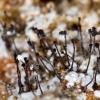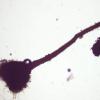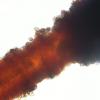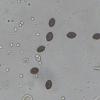
07-10-2015 20:37
 Christian Lechat
Christian Lechat
Hi to all,does anybody have Branislav Peric's emai

07-10-2015 15:40
 Blasco Rafael
Blasco Rafael
Hola tengo esta podosporas en excremento de oveja-

06-10-2015 20:59
 Chris Yeates
Chris Yeates
Bonsoir tousA recent good collection of Incrucipul

01-10-2015 05:10
Masanori KutsunaHi everyone, Does anybody have this article: Kum

03-10-2015 23:30
 Rubén Martínez-Gil
Rubén Martínez-Gil
Hola a todos. Subo unas fotos de un asco que he e

05-10-2015 17:59
 Blasco Rafael
Blasco Rafael
Hola de nuevo.estas Hyaloscyphas las encontre cerc

01-10-2015 19:05
 Blasco Rafael
Blasco Rafael
hola, tengo esta muestra recogida a unos 1600m, so
Cephalotrichum?
Dragiša Savic,
07-10-2015 14:25
I found them at the bottom of decaying deciduous trees.
Height about 2,3mm
Spores 10,7 x 7,6
Does anyone have the key to this genus?
Chris Yeates,
07-10-2015 20:52

Re : Cephalotrichum?
This seems to be associated with another fungus; might it not be a Melanospora like:
http://www.ascofrance.com/search_recolte/3013 ?
regards
Chris
http://www.ascofrance.com/search_recolte/3013 ?
regards
Chris
Dragiša Savic,
08-10-2015 07:39
Re : Cephalotrichum?
Thanks Chris
I found an excellent paper about Melanospora (Paul F.Cannon 1982) on Ascofrance, and I'm reading now.
I found an excellent paper about Melanospora (Paul F.Cannon 1982) on Ascofrance, and I'm reading now.



